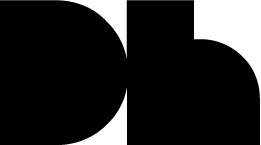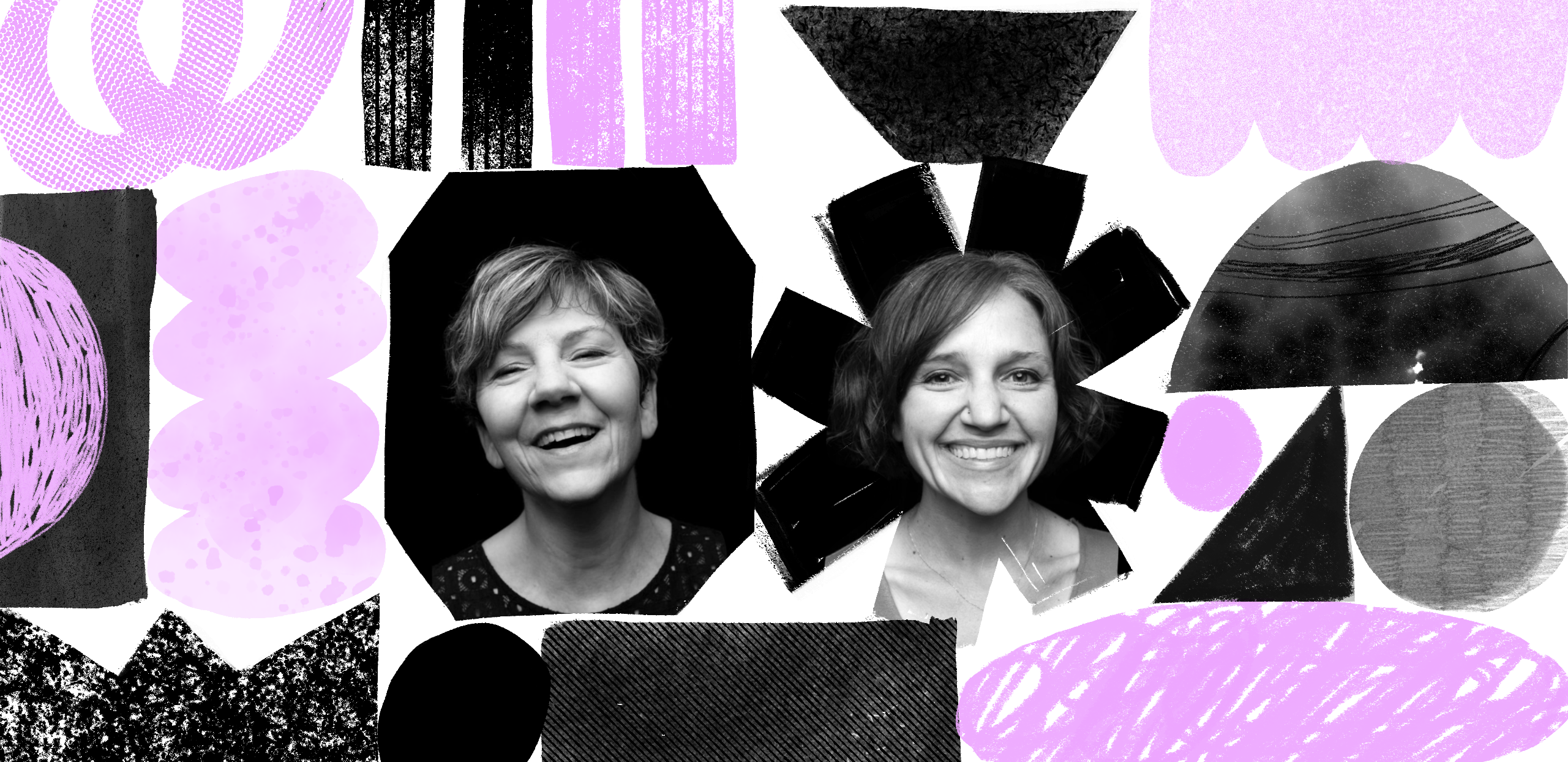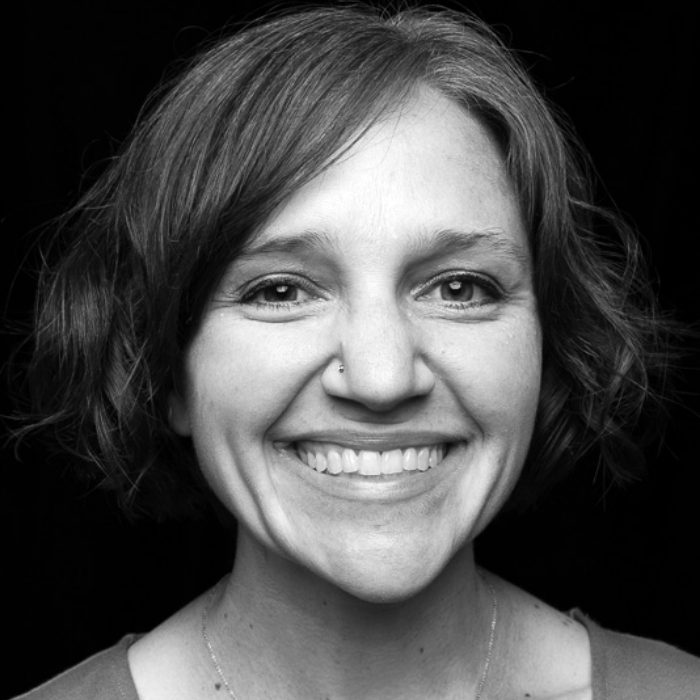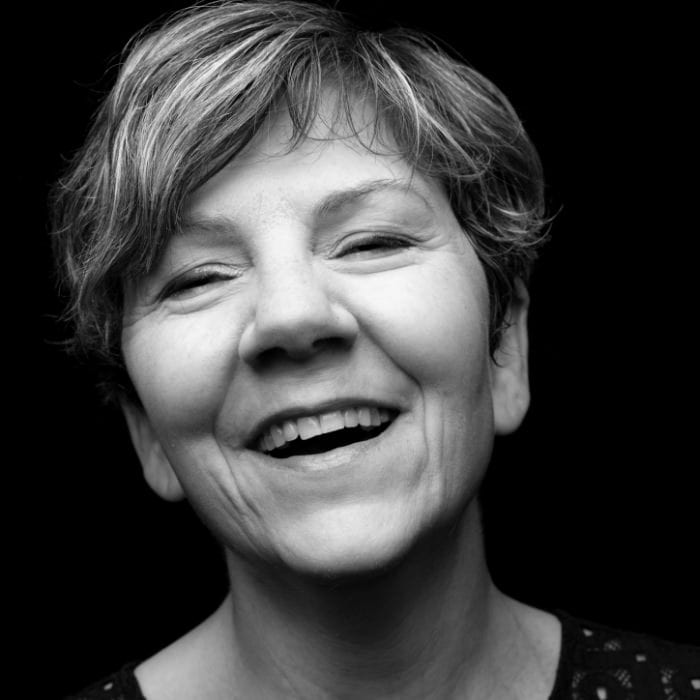Judy Heggem-Davis (on the left) and Linda Jones are creative leaders at DH.
We’re often asked about DH’s growth in recent years — what worked, what was hard, and any lessons learned. As two leaders of our growing creative team, Judy Heggem-Davis and Linda Jones have answers.
Judy was DH’s first designer, coming on board in 2013. She remains a creative original, bringing her one-of-a-kind point of view to clients’ campaigns as our director of design. Linda joined the agency four years later, eventually becoming DH’s creative director shortly before the agency opened its Seattle office and grew to 50 employees.
Now, DH’s integrated creative team includes writers, designers and art directors, animators, strategists and video editors. Judy and Linda talked recently about the growth and evolution of a creative team committed to social impact.
Judy Heggem-Davis:
Linda, what have you learned about growing a creative team inside the agency?
Linda Jones:
It doesn’t happen overnight! It takes time and care to ensure we’re adding the right team members at the right time. Each person who’s joined us over the years adds different value to our work, and many team members bring skills outside their “role.” We have designers who write and writers who create website wireframes, and we all understand video and web on one level or another.
How about you? What have you learned?
Judy:
With a growing creative team, we needed better processes and more mindfulness. For example, the creative team wasn’t always introduced to the projects at the proposal stage, so they weren’t getting all the context they needed. We had to get more intentional about getting them up to speed at the right time.
As we’ve grown, we’ve been able to lean into different people’s skills, so no one has to wear all the hats (though I do love hats!). Now you can fit the project to a creative person’s skills or pair two creatives for a more varied set of concepts.
For you, have there been particularly challenging parts?
Linda:
Growing any team takes a little bit of risk. DH doesn’t want to hire someone and then turn around and let them go if a project goes away. When we add team members, it’s for the long term. So it can be a balancing act to make sure we have work that both inspires and keeps everyone on our team working at full capacity. One helpful thing is we’ve learned how to recruit and partner with an incredible network of contract and freelance creative people to pitch in when we need it.
I would say it’s been easier to find a talented group of really creative people who work well together. Our team enjoys working with each other and collaborates often. We inspire one another to keep trying new things.
What’s been challenging from your perspective, as someone who was once a team of one?
Judy:
Getting everyone to think past tactics and develop true creative strategy, including thoughtful creative briefs. We do our best work when we have a juicy problem to solve within clear boundaries.
As an introvert who has often worked independently, creating an environment where we regularly ask for feedback was hard for me, I’d say. I credit others on the team for encouraging more intentional sharing, which turns out to be such a benefit.
We have this thing called Feedback Loop, and it is great. Any creative can bring ideas they are working on to get constructive feedback or get unstuck. People bring different skillsets, perspectives and experiences, so it makes the work so much better and helps us move faster.
We tried several iterations in the decade before this. What made it work this time? I think it was the tenacity of several creative leaders to keep trying things, the willingness of our creative team to embrace it, and the clear benefit to the work. It’s fun to bounce ideas around. It gets us out of our heads when the inner critic rises up.
Linda, I’m interested in how you keep finding new ideas after 20-plus years as a designer.
Linda:
Design is everywhere you look if you want to find it. It can be hard to turn that side of your brain off when you’re consuming media or just walking through the grocery store. Social media has made it easier to pay attention to trends in the industry. I also follow design and video-focused accounts to see what others are doing.
How about you?
Judy:
I love Communication Arts magazine. Paging through a physical magazine seems to charge my creative juices in a different way than scrolling through galleries, agency reels and case studies, though I love those, too.
Like others at the agency, I keep learning about the larger issues related to our work and finding inspiration there. For example, in recent years DH has learned a lot about diversity, equity and inclusion. We’ve put what we’ve learned into practice as our team has grown more committed to social impact.
What do you think is a designer’s responsibility in terms of DEI?
Linda:
When you start any project, it’s important to identify the audiences your client needs to reach and then sit down and determine the best way to reach them, or have them be a part of the project itself. It’s not just DH figuring it out on our own — it’s learning what resonates with them, how can they see themselves in the work. It’s why we’ve invested in building relationships with so many organizations and designers from different communities and with different lived experiences.
By centering diversity, equity and inclusion in our process, we put so much more intention behind the work to help us reach audiences where they are. When I first started working with teams on video, there was always the question, “Does this need to be captioned?” More often than not, it was decided it didn’t need to be. Now, no matter the language, we caption all our videos.
Judy:
Yes. And I appreciate that our clients’ audiences are often part of the creative process now. We’ll get input from community members on creative and consult review groups to be sure the work looks and sounds relevant and meaningful to them. Those are just a couple of examples, but our work is more well-informed now by the people clients want to reach. Which makes it both more interesting to work on, not to mention more effective.



